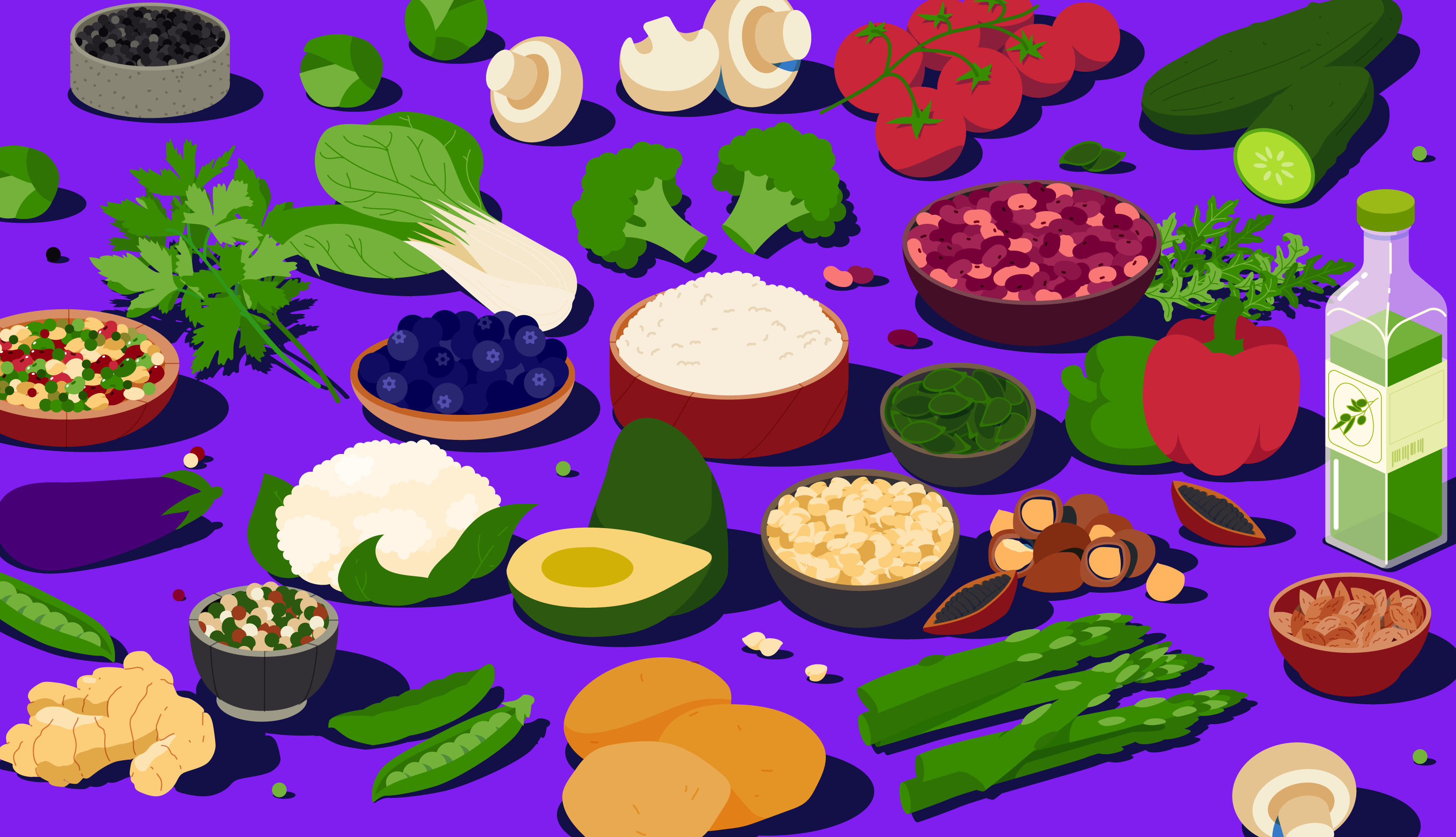The Power of Dietary Fiber: A Key to Mental Health

Hello, Thrivers! Today, we're diving into the fascinating world of dietary fiber and its surprising connection to our mental health.
A recent study has shed light on how this humble nutrient can play a significant role in managing depression. So, let's break down the science and explore how we can harness the power of fiber to thrive in our daily lives.
The Science Behind the Scenes
A systematic review and meta-analysis of epidemiologic studies, published in Nutr Neuroscience in February 2023, has revealed some intriguing findings. The researchers found that a higher intake of dietary fiber was associated with a 10% lower odds of depression in adults and a whopping 57% lower odds in adolescents.
In simpler terms, the more dietary fiber you consume, the lower your risk of depression.
The study also found that each 5-gram increase in your daily dietary fiber intake could reduce your risk of depression by 5%.
Making Sense of the Science

The connection between dietary fiber and mental health is a fascinating area of research. To understand this, we need to delve a little deeper into the world of gut health and its influence on our brain.
Our gut is home to trillions of microorganisms, collectively known as the gut microbiota. These microorganisms play a crucial role in our overall health, including our mental health. They help break down food, produce essential vitamins, and even communicate with our immune system.
Dietary fiber, particularly the type known as prebiotic fiber, acts as food for these beneficial gut bacteria. When we consume fiber-rich foods, we're not just nourishing ourselves, but also our gut microbiota. A well-nourished gut microbiota is a diverse and balanced one, which is key to a healthy gut.
Now, how does a healthy gut contribute to mental health?
This is where the concept of the gut-brain axis comes into play. The gut-brain axis is a two-way communication system between our gut and our brain. The gut microbiota can send signals to the brain via various pathways, including the nervous system, immune system, and hormones.
Emerging research suggests that these gut-to-brain signals can influence our mood and mental health. For instance, certain species of gut bacteria can produce neurotransmitters, like serotonin and dopamine, which are key players in regulating our mood.
In the context of depression, it's thought that a healthy and diverse gut microbiota, nurtured by a high-fiber diet, can help maintain a positive mood and reduce the risk of depression. This could be through the production of mood-regulating neurotransmitters, reducing inflammation, or other yet-to-be-discovered mechanisms.
While more research is needed to fully understand these complex interactions, it's clear that dietary fiber plays a significant role in supporting our gut health and, potentially, our mental health. By nourishing our gut microbiota with a fiber-rich diet, we could be taking a proactive step towards better mental well-being.
Applying the Science: Your Action Plan
Understanding the science is the first step, but the real magic happens when we apply these findings to our daily lives. Here's how you can do just that:
- Increase Your Fiber Intake:
The first step is to consciously increase your intake of fiber-rich foods. This doesn't have to be a drastic change. Start by adding more fruits, like apples and bananas, to your breakfast or as snacks. Incorporate more vegetables, such as broccoli and carrots, into your meals. Opt for whole grains like brown rice or whole wheat bread instead of their refined counterparts. Small changes can add up to a big difference in your overall fiber intake. - Diversify Your Fiber Sources:
Not all fibers are created equal. The study found that fiber from vegetables and soluble fiber (the type that dissolves in water to form a gel-like substance) had a significant inverse association with depression. This means that these types of fiber could be particularly beneficial for mental health. To diversify your fiber sources, aim to include a variety of foods in your diet. This could mean having oats (a great source of soluble fiber) for breakfast, a salad with a variety of vegetables for lunch, and a lentil curry (lentils are high in both soluble and insoluble fiber) for dinner. - Monitor Your Fiber Intake:
It's important to ensure you're getting enough fiber, but not going overboard. The recommended daily intake is 25+ grams for women and 38+ grams for men. There are many apps and tools available that can help you track your fiber intake. Remember, the goal is not to reach these numbers at all costs, but to gradually increase your fiber intake in a way that's sustainable and enjoyable for you.
If you're not used to a high-fiber diet, it's best to increase your intake gradually to prevent digestive discomfort.
By implementing these steps, you're not just applying the science, but actively taking control of your mental health. Remember, every journey begins with a single step. So, why not take that step today with a fiber-rich meal?
Top 10 Fiber-Rich Foods
To help you get started, here are the top 10 fiber-rich foods you can incorporate into your diet:
- Lentils
- Black Beans
- Avocados
- Chia Seeds
- Quinoa
- Oats
- Almonds
- Sweet Potatoes
- Popcorn
- Dark Chocolate 85% or higher
5 Tips to Get More Fiber in Your Daily Life

- Start Your Day with Fiber:
Breakfast is a great opportunity to get a head start on your fiber intake. Oats is a fantastic choice as it's not only high in fiber but also versatile. You can top it with fruits, nuts, or seeds for added fiber. Smoothies are another excellent option. Try blending spinach, berries, and a tablespoon of chia seeds with your choice of milk for a fiber-packed start to your day. - Snack Smart:
Snacks can either make or break your diet. Opt for fiber-rich snacks to keep you full and satisfied between meals. Almonds are a good source of fiber and they're portable, making them a perfect on-the-go snack. Popcorn is another great choice. It's a whole grain and has more fiber than many other popular snack foods. - Go for Whole Grains:
Whole grains are significantly higher in fiber than their refined counterparts. Make a simple swap in your diet by choosing brown rice over white, whole grain bread over white bread, and whole grain pasta over regular. You can also explore other whole grains like quinoa, barley, and bulgur. - Add Veggies to Every Meal:
Vegetables are a great source of fiber and they're also low in calories. Try to include at least one vegetable in every meal. This could be as simple as adding spinach to your morning smoothie, having a salad with lunch, or roasting a medley of vegetables for dinner. You can also snack on raw veggies with hummus or add them to your sandwiches and wraps. - Embrace Legumes:
Legumes, which include lentils, beans, and peas, are some of the most fiber-rich foods out there. Incorporate more of them into your diet by adding lentils to your soups and salads, making a bean dip for your snacks, or having a side of peas with your dinner. You can also try dishes from different cuisines that feature legumes, like Indian dal or Mexican black bean soup.
Remember, increasing your fiber intake is not just about adding certain foods to your diet. It's also about making conscious choices throughout the day, from the moment you start your day to your last meal. Every little bit adds up and contributes to your overall health and well-being.